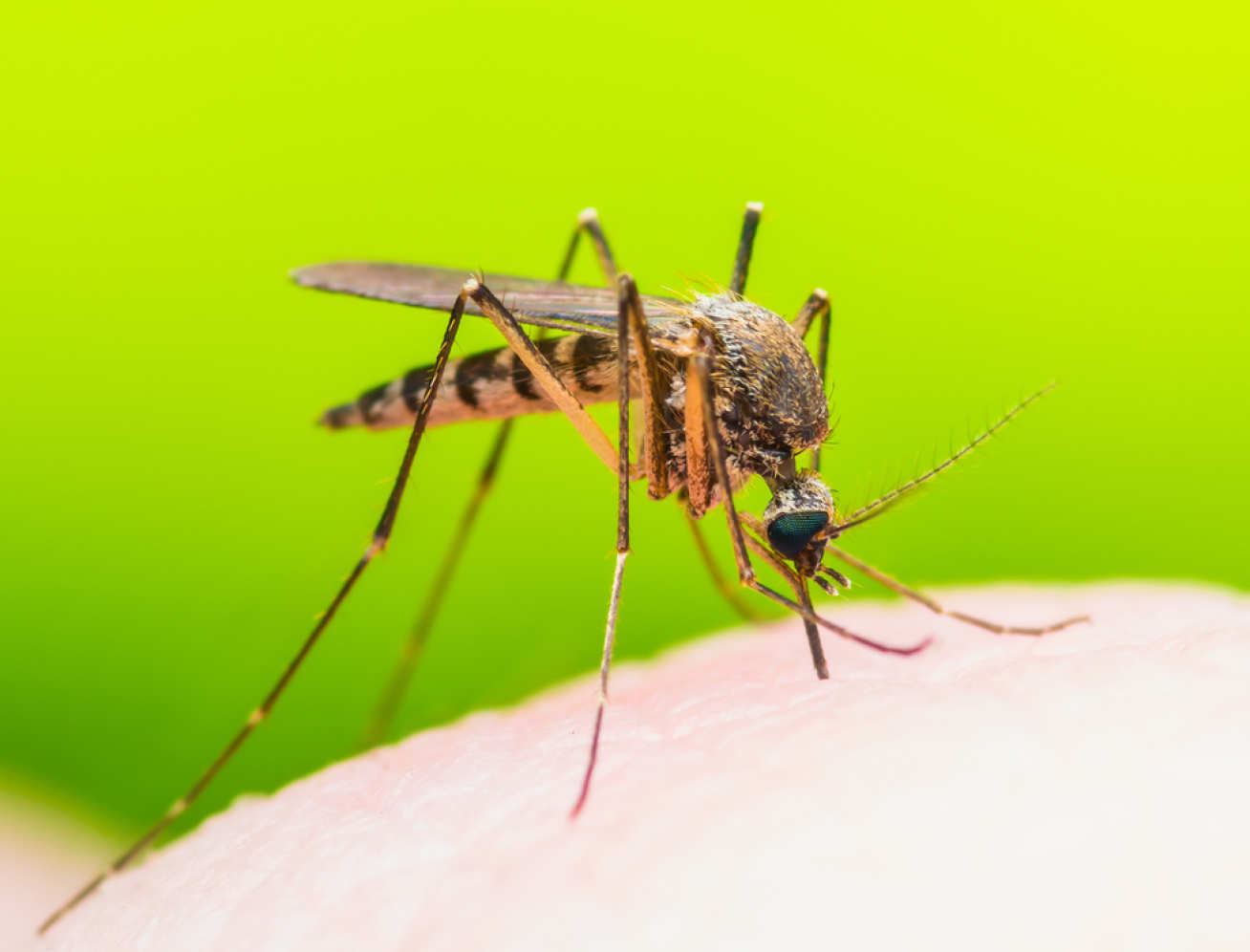

Yellow fever kills around 80,000 people every year - and causes severe disease in a further 150,000.
An effective vaccine is available - yet global stocks are perilously low.
To help pinpoint where vaccines and resources should be targeted, Imperial scientists have studied yellow fever in Africa to identify regions most at risk from an outbreak.
Here the two researchers behind the work, Dr Tini Garske and Mr Arran Hamlet, from Imperial's School of Public Health, explain why their work is urgently needed.
What is yellow fever?
Yellow fever is caused by a virus, and spread when people, or monkeys, are bitten by infected mosquitoes (it can’t be transmitted from person to person contact).
Around half of the people infected develop no symptoms at all, while around a third develop symptoms such as headache and nausea.
If there was an Asian outbreak, this could potentially affect millions of people – and rapidly deplete vaccine stocks Dr Tini Garske & Arran Hamlet Study authors
However a small proportion, for unknown reasons, develop a severe form of the disease. Around half of these people die within a week.
Yellow fever occurs in tropical and subtropical areas of Africa and South America - with ongoing outbreaks in Brazil and Nigeria. The largest recorded yellow fever outbreak in 30 years occurred in 2016 in Angola and the Democratic Republic of the Congo.
Most yellow fever outbreaks in humans are often due to spill over from transmission between monkeys, and have only a few cases. However, if not caught in time, the infection can establish itself in urban areas, where it snowballs and the number of infected mosquitoes - and therefore infected people - increases rapidly.
Why is there a vaccine shortage?
There is no cure for yellow fever, but we’ve had an effective vaccine since the 1930s.
However, as the manufacturing methods haven’t changed much over the last 70 years, the vaccine takes a long time to produce due to the complexity of manufacturing.
This has led to a global shortage of yellow fever vaccine, with only around six million doses available at any given time for outbreak control, which has proven insufficient to deal with recent outbreaks in Angola and the Democratic Republic of the Congo.
This short supply means we need to find ways of accurately highlighting where, and when, the risk of transmission is increased. Although high risk areas have vaccination programmes for children, immunising everyone at risk takes massive amounts of resources - and will take many years of constant work.
But if we pinpoint the area of the next outbreak before it happens we can ensure we have jabs ready, to try and stop it in its tracks.
How can we predict outbreaks?
At the moment, scientists use mathematical models to help identify high-risk areas. These often use yearly figures, such as annual rainfall.
However, we noticed that different months had very different numbers of yellow fever cases, suggesting the risk of an outbreak varies throughout the year.
To investigate this, we devised the first ever model that studies how climate factors such as temperature, rainfall and vegetation change month by month.
These factors combine to form a ‘perfect storm’ for yellow fever transmission.
Transmission increases with temperature, as mosquito metabolism increases with air temperature. This means they bite more people - and viral replication inside the mosquito also increases.
Mosquitoes breed in water, therefore more people are bitten in rainy seasons - and the insects also prefer areas of high vegetation such as jungles.

Using this data, our model highlights areas of high risk, and shows how this risk changes throughout the year. This allows medics to get vaccines in place, position staff, or just intensify surveillance.
The mosquito that transmits urban yellow fever, called Aedes Aegypti, also carries other viruses such as dengue and zika. Therefore our model could also be used to highlight areas at high risk from these diseases.
In our research, which is published in the journal PLOS Neglected Tropical Diseases, and funded by the Bill and Melinda Gates Foundation, we studied Africa, but this model could be used to identify high risk areas in other parts of the world.
Why are we worried about an Asian outbreak?
Yellow fever transmission has never been documented in Asia - despite the perfect combination of conditions such as temperature, rainfall and vegetation.
We don’t yet know why this would be - but if there was an outbreak, this could potentially affect millions of people – and rapidly deplete vaccine stocks. Therefore, the work scientists across the globe, and here at Imperial, are doing to stop yellow fever in Africa and South America may also stop it spreading to Asia.
–
"The seasonal influence of climate and environment on yellow fever transmission across Africa" by Hamlet et al is published in PLOS Neglected Tropical Diseases.
Article text (excluding photos or graphics) © Imperial College London.
Photos and graphics subject to third party copyright used with permission or © Imperial College London.
Reporter
Kate Wighton
Communications Division

Contact details
Email: press.office@imperial.ac.uk
Show all stories by this author
Leave a comment
Your comment may be published, displaying your name as you provide it, unless you request otherwise. Your contact details will never be published.




Comments
Comments are loading...